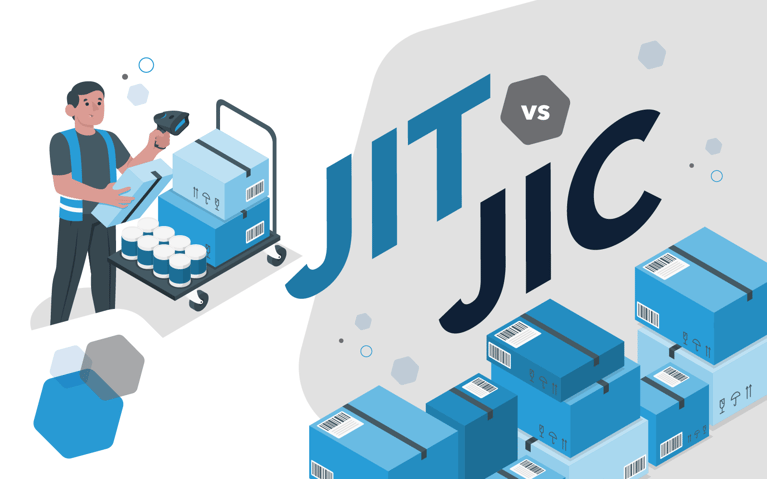Proper inventory management is crucial for streamlining operations, reducing costs and maximizing your profitability. Let’s explore some practical ways to optimize your inventory turnover.
What is inventory turnover and why is it important?
Inventory turnover refers to the number of times a business sells and replaces its inventory within a specific period, usually a year. It measures how quickly a company can convert its inventory into sales and generate revenue.
Inventory turnover is important for several reasons. First, it helps businesses identify and address dead stock. Dead stock is inventory you can’t return to the supplier because it’s out of season, not in demand or outdated. By monitoring inventory turnover, you can pinpoint slow-moving products and take action to reduce excess stock levels. This avoids tying up valuable resources and capital in items that have low customer demand.
Second, inventory turnover helps you optimize stock levels and meet customer demand efficiently. This ensures popular items are readily available to customers while minimizing the risk of overstocking.
Third, inventory turnover is a key metric for evaluating a business’s financial health. A high turnover ratio indicates effective inventory management, resulting in better cash flow and profitability.
Factors that impact inventory turnover
Many factors affect inventory turnover. Two major ones are supply chain efficiency and demand forecasting. Let’s look at how they work and how you can improve them.
Supply chain efficiency and inventory turnover
Supply chain efficiency and inventory turnover play a vital role in the success of e-commerce businesses. When the supply chain operates efficiently, products move swiftly from suppliers to customers.
Efficient supply chain management contributes to improved inventory turnover. By minimizing delays and bottlenecks in the supply chain, businesses can receive inventory faster and replenish stock more frequently. This keeps popular products readily available to customers. You can try:
- Improving communication between the links — manufacturers, suppliers, warehouses — in your supply chain
- Using fulfillment analytics to track your fulfillment key performance indicators
- Setting up automated order processing instead of verifying and processing orders manually
- Mapping out your warehouse and placing inventory to make fulfillment faster
- Using a third-party logistics (3PL) provider instead of trying to do it all yourself
By focusing on supply chain efficiency and inventory turnover, e-commerce business owners can enhance customer satisfaction. Faster order processing, reduced lead times and consistent availability of products improve customer experience, cash flow and profitability.
Demand forecasting and its influence on inventory turnover
Demand forecasting is an important aspect of inventory management for businesses. It involves predicting how much of a product customers will want to buy in the future.
If there are strong sales and you forecast demand accurately, you’ll have enough inventory to meet customer needs. This helps prevent stockouts and keeps customers happy. On the other hand, if you overestimate demand and there are weak sales, you may end up with excess inventory that takes longer to sell.
The fastest way to improve in this area is using software with a demand forecasting algorithm that generates daily, weekly and monthly sales forecasts for each SKU.
Effective inventory turnover improvement techniques
Now that we’ve covered major factors that impact inventory turnover, let’s look at some practical ways to improve in this area.
Categorize inventory based on demand and profitability
Categorizing inventory based on demand and profitability can greatly enhance inventory turnover for e-commerce business owners. By organizing inventory into categories, you can focus your efforts on managing each category effectively.
First, identify high-demand items that sell quickly: "fast-moving" or "popular" products. By closely monitoring the demand for these items, businesses can ensure they have sufficient stock to meet customer needs and avoid stockouts.
Second, identify slower-moving or lower-profit items: "slow-moving" or "low-demand" products. It's crucial to identify these items and assess their profitability. By accurately categorizing them, businesses can make informed decisions on whether to reduce their stock levels, offer promotions to boost sales or even discontinue those products.
Finally, identify items with high profitability but lower demand: "high-profit" or "niche" products. While the demand for these items may not be as high as popular products, they can contribute significantly to the overall profitability of the business. By categorizing them separately and allocating appropriate resources for marketing campaigns, businesses can maximize their profitability.
By categorizing inventory based on demand and profitability, e-commerce business owners can allocate their resources more efficiently, ensure optimal stock levels and improve inventory turnover.
Implement automated inventory tracking systems
Implementing automated inventory tracking systems can benefit e-commerce business owners by streamlining their inventory management processes. These systems use technology to automatically monitor and update inventory levels, making it easier to track stock accurately and reduce stockouts, overstocks and holding costs.
Various inventory management software options offer features like real-time inventory updates, barcode scanning and integration with other business systems. To set one up, you’ll input product information and stock quantities and set up automated alerts for low stock levels or reorder points.
Once the system is in place, train employees on how to use it effectively. This includes teaching them how to scan barcodes, update stock information and interpret system-generated reports.
Conduct regular inventory audits and cycle counts
Conducting regular inventory audits and cycle counts is crucial for e-commerce business owners to maintain accurate inventory records and run efficient operations. These practices involve physically counting and verifying the quantity of items in stock, comparing it with the recorded data and making necessary adjustments.
To begin, create a schedule for conducting inventory audits and cycle counts. This could be monthly, quarterly or annually, depending on the size and nature of your business. Consistency is key to keeping track of inventory accurately.
When conducting an audit or cycle count, select a specific section or category of inventory to focus on. This allows you to divide the task into manageable parts and inventory items thoroughly.
During the count, physically verify the quantity of each item and compare it to the recorded data. Note any discrepancies, and investigate the reasons behind them. This may involve identifying potential issues such as theft, inaccuracies in recording or inefficiencies in inventory management processes. After completing the count, update your inventory records to reflect the accurate stock levels. Make necessary adjustments and investigate any persistent discrepancies to improve future accuracy.
Regular inventory audits and cycle counts provide several benefits. They help identify and rectify inventory inaccuracies, reducing the risk of stockouts or overstocking. Accurate inventory data also enables efficient order fulfillment, reduces carrying costs and enhances overall inventory turnover.
Incentivize the sales of old stock
Incentivizing the sales of old stock is important for e-commerce business owners to clear out inventory and make room for new products. There are a few strategies that can be used to encourage customers to purchase older items:
- Discounts and promotions: Experiment with pricing strategies like special discounts specifically for old stock. This can attract customers with lower prices and create a sense of urgency to buy.
- Bundle deals: Combine older items with new or popular products to create attractive bundle deals. This encourages customers to purchase the older items along with something they desire.
- Limited-time offers: Create a sense of scarcity by offering limited-time deals on old stock.
Stock inventory that sells
At the risk of stating the obvious, e-commerce businesses should stock inventory that sells. To do this:
- Analyze customer preferences: Study your customers' buying patterns and preferences to understand what products they’re most likely to purchase.
- Follow market trends: Stay up to date with current trends in your industry to identify popular products in high demand.
- Monitor sales data: Regularly review your sales data to identify top-selling items, and adjust your inventory accordingly.
- Plan for seasonal demand: Anticipate seasonal fluctuations in customer demand and stock up on products that are popular during specific times of the year.
Learn how to calculate inventory turnover ratio
Calculating the inventory turnover ratio, also known as the stock turnover ratio or inventory turnover rate, helps e-commerce business owners understand how quickly they sell their inventory.
To calculate it, divide the cost of goods sold (the amount spent on purchasing or producing inventory) by the average inventory (the average value of inventory during a specific period). This is the inventory turnover calculation:
Inventory Turnover = Cost of Goods Sold / Average Value of Inventory
Average Value of Inventory = Value of Inventory at the End of a Period of Time + Value of Inventory at the End of the Prior Period / 2
The higher the inventory turnover ratio, the faster you’re selling and replacing inventory. The inventory turnover ratio formula helps you determine if you have excess inventory or if you need to increase your sales.
Improve your inventory management for bigger business growth
Effective inventory management is essential for the success of your e-commerce business. By categorizing inventory, automating tracking systems, conducting regular audits, knowing your inventory ratios and incentivizing sales, you can optimize your inventory turnover and improve overall operations.
If you need help with managing your inventory and growing your e-commerce business, contact us now.
Subscribe to our emails for the latest industry insights!
By entering your email, you agree to receive marketing emails from Cart.com





